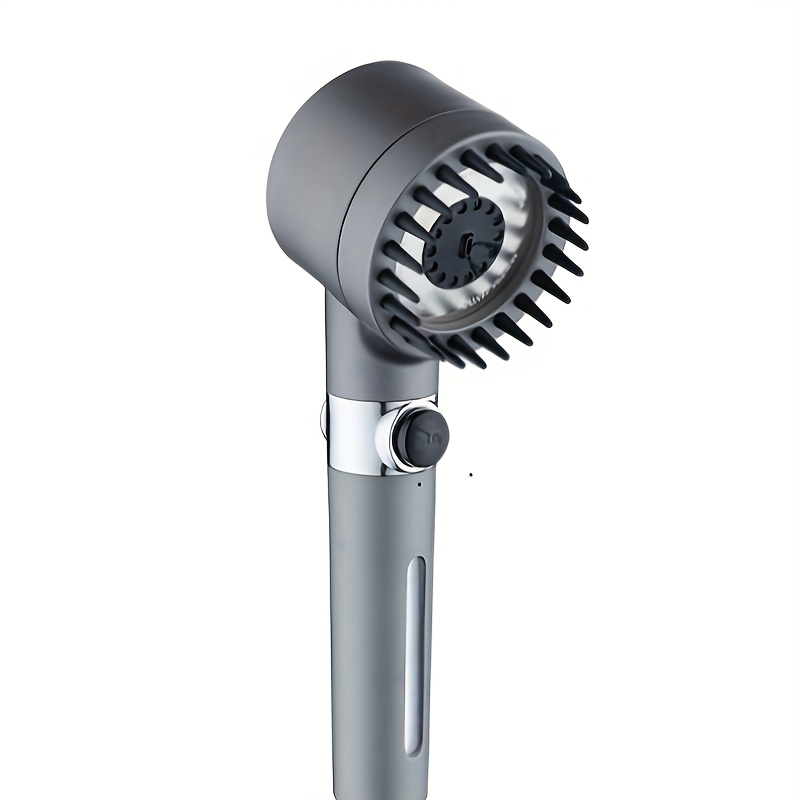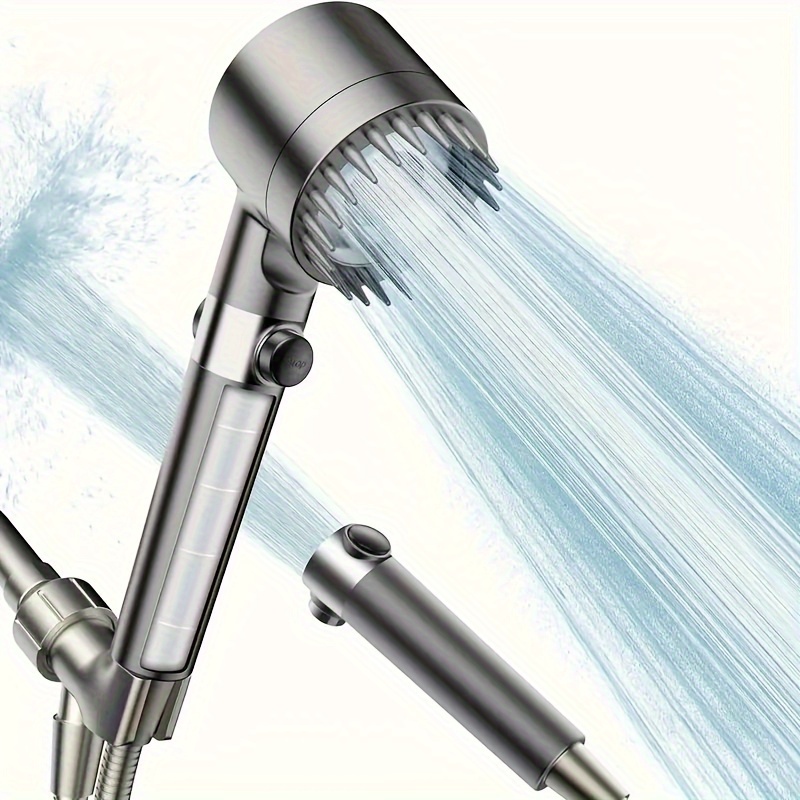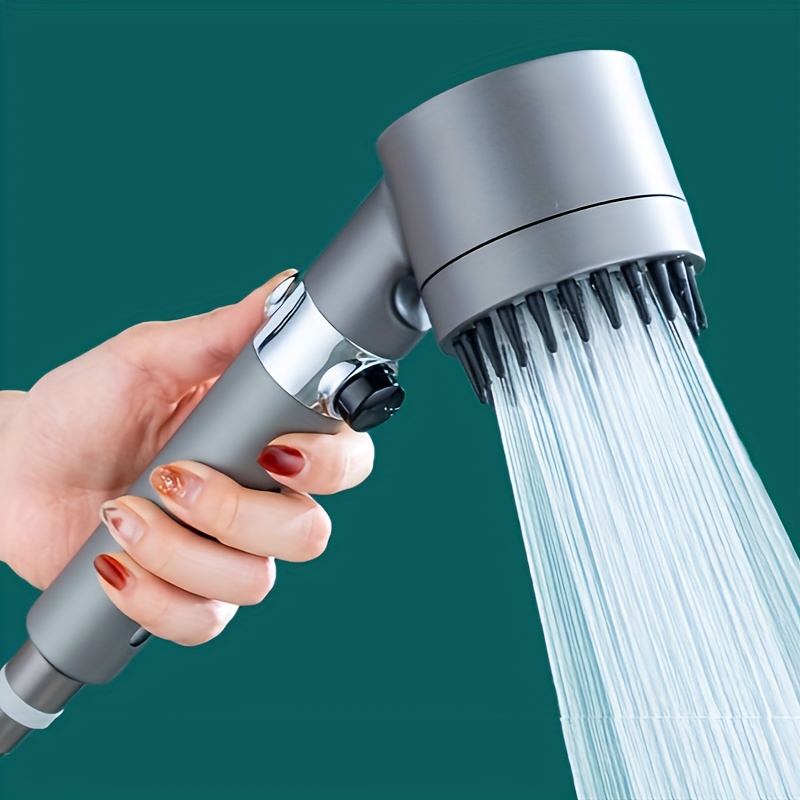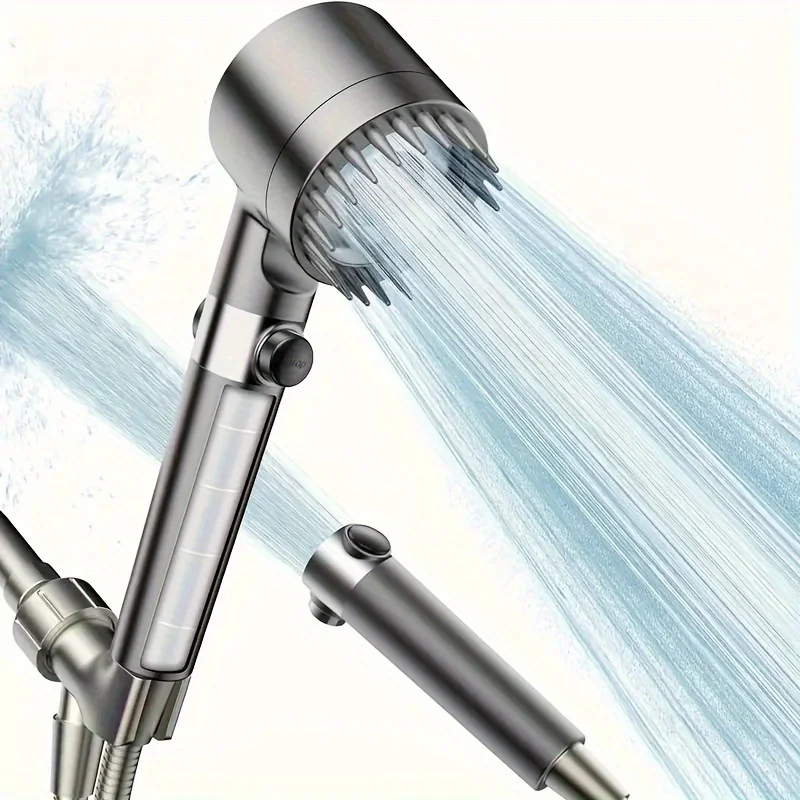Introduction to Removing Stuck Shower Heads
Facing a stuck shower head can be a real nuisance. It can turn a simple replacement task into a test of patience. However, with the right approach, this is a DIY task that most homeowners can handle. This guide will walk you through the essentials for tackling the challenge of how to remove a stuck shower head.

Firstly, it’s important to understand why shower heads become immovable. Over time, mineral deposits, corrosion, and rust contribute to sealing the shower head onto the pipe. Without proper tools and techniques, you might cause more harm than good to your bathroom fixtures.
In this guide, you’ll get a clear overview of the necessary steps and tips to successfully remove a stuck shower head. The goal is not only to replace it with a new, high-pressure rainfall shower head but also to preserve your bathroom’s condition. We will explore essential tools to have at hand, how to prepare your work area to prevent damage, and effective methods to unfasten that stubborn shower head.
By the end of this guide, you should feel confident and equipped to revamp your shower experience without having to call a professional—at least, not yet. Let’s dive into the process of removing that stuck shower head and set the stage for a refreshing update to your bathroom.
Essential Tools for Shower Head Replacement
When embarking on the task of how to remove a stuck shower head, having the right tools is critical. Lack of proper equipment could lead to frustration, or worse, to damaging your bathroom fixtures. Here’s what you’ll need:
- A Tarp or Garbage Bag: This will protect your bathtub and other bathroom fixtures from rust and debris.
- Adjustable Wrench or Pliers: These are necessary for gaining leverage to twist off the shower head.
- Plumber’s Tape: An essential item which helps prevent leaks by sealing the threads on your new shower head.
- Vinegar: A natural and effective substance for dissolving mineral buildup that’s causing the shower head to stick.
- Steel Wool: Useful for cleaning the threads on your shower pipe once the old shower head is removed.
- Gallon-sized Bag: To hold the vinegar during the soaking process, if necessary.
These tools are not only for removing your old shower head but also prepare you for installing the new one. The process is generally straightforward, but the right tools make all the difference in ensuring a smooth replacement without any unexpected hiccups.
Remember, simplicity and preparation are your allies in this DIY project. Now that you have your tools ready, you’re set to take the next steps in replacing your shower head confidently and effectively.
Preparatory Steps Before Removing the Shower Head
Before you tackle the stuck shower head, take the necessary steps to prepare your workspace and tools. A bit of preparation can save you from unnecessary damage and make the whole removal process smoother. Here are key actions to take before you begin:
- Turn Off the Water Supply: Ensure that your water supply is shut off to avoid any water surprises.
- Lay Down a Protective Cover: Place a tarp or garbage bag in the bathtub to catch any falling debris and protect the surface from scratches or rust stains.
- Gather Your Tools: Have your adjustable wrench or pliers, plumber’s tape, vinegar, steel wool, and gallon-sized bag within reach.
- Attempt a Manual Twist: Before using any tools, try once more to twist the shower head off by hand. It might just come loose.
- Wrap the Wrench: If manual twisting fails, prepare your wrench or pliers by wrapping the jaws with plumber’s tape or a cloth to protect the shower head’s finish.
Taking these preparatory steps will not only protect your bathroom but also set you up for a successful removal of that stubborn shower head. Next, we’ll dive into the techniques to effectively remove a stuck shower head.

Techniques to Remove a Stuck Shower Head
Successfully removing a stuck shower head requires the right techniques. Here’s how you can do it effectively:
- Use Vinegar Soak: If your shower head is still immovable after manual attempts, use vinegar. Fill a gallon-sized bag with vinegar and secure it around the shower head. Let it soak overnight to dissolve mineral buildup. This often loosens the grip of deposits making removal easier.
- Apply Proper Tool Use: Grab your adjustable wrench or pliers. Remember to wrap the tools’ jaws with plumber’s tape or a soft cloth. This prevents scratches and provides a better grip. Slowly twist the shower head, applying consistent pressure until it moves.
- Increase Leverage: If the shower head still won’t budge, increase your leverage. Position the wrench for maximum force and try loosening it again. Sometimes, more torque is necessary.
- Heat Application: Carefully applying heat can also help. Use a hair dryer to warm up the shower head and the connecting pipe. The expansion of the metal can help break the seal of the deposits.
By following these techniques, you should be able to remove the stuck shower head without damaging your bathroom fixtures. Persistence and the right approach are key to success in this DIY task.
Cleaning and Preparing the Shower Pipe
After you’ve successfully removed the stuck shower head, it’s essential to clean and prepare the shower pipe for the new installation. This step prevents future leaks and ensures your new shower head functions perfectly.
- Scrub Off Mineral Deposits: Use steel wool to scrub any mineral deposits, rust, or old plumber’s tape from the threads of the shower pipe. Be thorough to create a clean surface.
- Apply Vinegar for Tough Buildup: If you encounter tough buildup, soak a cloth in vinegar and wrap it around the pipe threads. Let it sit for a few minutes to break down the deposits before scrubbing again.
- Dry the Pipe Threads: Once clean, ensure the threads are completely dry. Moisture can interfere with the sealing process when installing a new shower head.
- Wrap With New Plumber’s Tape: After drying, wrap fresh plumber’s tape clockwise around the threads. This creates a seal that helps prevent water leaks.
With the shower pipe prepped, you’re one step closer to enjoying that satisfying rainfall from your new high-pressure shower head. Remember to always tighten by hand first to avoid cross-threading, then use your tools to securely fasten the new shower head.
Step-by-Step Showerhead Installation
Installing your new showerhead is simple if you follow these steps. Make sure you have your tools ready and your workspace protected. Here’s how to do it:
- Wrap the Pipe Threads: Start by wrapping the cleaned pipe threads with plumber’s tape. This helps prevent leaks at the connection.
- Hand-Tighten the Showerhead: Attach your new showerhead onto the pipe by hand. Be careful not to cross-thread, which can cause damage.
- Use Tools If Necessary: If you can’t tighten the showerhead by hand, use pliers or a wrench. Protect the showerhead’s finish with a cloth while doing so.
- Follow the Manufacturer’s Instructions: Every showerhead is different. Look at the instructions provided for any specific details.
- Ensuring a Secure Fit: Make sure the showerhead is securely attached. It should not wobble or leak when in use.
Install your new showerhead with confidence. It’s a straightforward process when you are equipped with the right knowledge and tools.
Leak Testing and Final Adjustments
After installing your new showerhead, checking for leaks is crucial. Here’s how to do it effectively:
- Turn On the Water Supply: Reactivate your water supply to test the new installation.
- Check for Leaks: Observe the connection between the shower pipe and the showerhead. Look for any dripping or moisture.
- Adjust if Necessary: If you notice a leak, tighten the showerhead slightly with your wrench or pliers. Use a cloth to protect the finish.
- Apply Extra Plumber’s Tape: Sometimes, additional plumber’s tape can stop a leak. Wrap it carefully around the threads and reattach the showerhead.
- Test Again: After adjustments, turn on the water again to check. Ensure no water leaks this time.
Making these final adjustments helps ensure your new showerhead works perfectly without any leaks. Remember, patience and precision are your best tools here.

Maintenance Tips for Your New Shower Head
To ensure your new shower head operates effectively for a long time, regular maintenance is crucial. Here are some helpful tips:
- Regular Cleaning:
Regularly clean the nozzles and body of the shower head. This prevents mineral buildup and maintains water flow.
- Vinegar Soak:
Every few months, detach the shower head and soak it in vinegar overnight. This will dissolve any hard water deposits.
- Check for Leaks:
Periodically check the connection between the shower head and the pipe for any signs of leaks. Tighten or reapply plumber’s tape if necessary.
- Replace the Washers:
Washers can wear out over time. Check and replace them annually to prevent drips and improve seal integrity.
- Manual Inspection:
Inspect your shower head manually for any wear or damage during cleaning sessions. Early detection can prevent bigger issues.
- Proper Use and Handling:
Always handle the shower head gently when cleaning or adjusting. This prevents accidental damage.
- Consult the Manual:
For specific maintenance advice, refer to the manufacturer’s manual. Different models might have unique requirements.
By following these maintenance tips, you can enjoy a continuous and efficient performance from your new shower head. Regular upkeep not only extends its lifespan but also enhances your showering experience.
When to Call a Professional for Shower Head Replacement
Sometimes, despite your best efforts, a stuck shower head won’t come loose. If you’ve tried all the DIY tips and the shower head is still stuck, it might be time to call a professional for help. Here are a few scenarios when enlisting the help of a plumber is the smart move:
- When You Lack the Right Tools: Not having proper tools can make removing the shower head difficult and might cause damage.
- After Multiple Failed Attempts: If you’ve attempted several times and the shower head won’t budge, a plumber’s expertise might be necessary.
- Concerns About Pipe Damage: If you suspect the pipe might be damaged or compromised, a professional can address this without causing further problems.
- Complex Shower Systems: Some modern showers have complex systems that require a knowledgeable person for disassembly and reassembly.
- Visible Corrosion: When corrosion is extensive, a professional can remove the shower head safely and provide solutions to avoid future issues.
Calling a professional can save you time and prevent costly mistakes. Remember, tackling plumbing issues without the appropriate skill can lead to complications, leaks, or the need for more repairs. A certified plumber has the tools, experience, and knowledge to handle even the most stubborn shower heads. Make the call if you’re unsure about any step in the process or when things aren’t going as planned. It’s always better to be safe, and an expert can ensure a smooth transition to your new high-pressure rainfall shower head.



